A meeting notes template is a pre-formatted document designed to guide an individual (such as administrative assistants, project managers, team leaders, business owners, and other professionals) when recording information during a session.
This information may include updates, ongoing projects, upcoming events, brainstorming ideas, or even customer feedback. The layout has sections for the meeting’s purpose, agenda items, attendees, discussion points, action items, and follow-up tasks. It can be a physical or digital document. The most commonly used file formats for this template include MS Word, Google Docs, and OneNote. Using these types can help you customize a note that suits your needs.
Therefore, it is advantageous to use a template, since your information will be organized and consistent across the board. It will also be easy to understand as you can simplify critical details; this will save you time. Since you already have a pre-designed document, you can focus on the discussion points during the meeting instead of formatting the document. Furthermore, this document will increase your organization’s communication, decision-making, and productivity. Keep in mind that there are formal, informal, one-on-one, and project note templates.
This article will discuss the items to include in a template for meeting notes and tips for customizing it. Free printable templates have been provided for your ease in MS Word, Google Docs, and OneNote formats.
Items to be Included in a Template for Meeting Notes
There are specific items that you should include in your template. These components ensure that all the essential details are captured. This increases the chances of a successful and productive meeting.
They include the following:
Purpose
This section of the template should entail a clear yet brief description of the meeting’s objectives or goals. It is meant to improve the attendees’ focus since they will know the discussion topics to be handled. That means everyone will remain on track, and the meeting will be successful. Moreover, this section can include a summary of the objectives or goals, such as a project update, team review, or even brainstorming ideas.
Attendees
In this section, the template should entail a list of all individuals or groups involved in the meeting. This means identifying those who were present, along with their roles and responsibilities. This section aims to keep track of attendees for record purposes. In addition, this information ensures that all attendees are present and their input is noted.
Agenda items
In the agenda items section, you should list all the topics you will discuss during the meeting. Ensure that you include a clear and detailed description of each item. This section is meant to organize the agenda items to make it easier for your team. Thus, the attendees will be aware of the relevant topics, prepare, and remain focused.
Discussion points
In this section, focus on the main discussion points for the meeting. Your template should enable you to highlight all the vital information that was discussed. For instance, you can include a summary of key takeaways, detailed notes on these discussion points, and other relevant information.
Action items
In this part of the template, your focus should be to list all the tasks or roles assigned to the individuals or groups. You should provide the task’s name, its due date, and the name of the responsible individual. This information is meant to remind the attendees of their responsibilities and how long they have to handle them. In addition, they can review this template to check on their progress against the mentioned due date.
Follow-up tasks
This template section pertains to post-meeting actions that individuals should carry out. These tasks may involve activities like scheduling further discussions, corresponding with stakeholders, or distributing meeting notes to the participants.
note
If you create your template from scratch, include the above-mentioned essential components. However, if you do not want to make one from scratch, you can use the free printable templates for meeting notes provided on our website. These pre-designed documents will save you time and effort when recording information. These pre-made templates have a standardized format and structure for note-taking but can be customized to suit your needs.
Free Templates
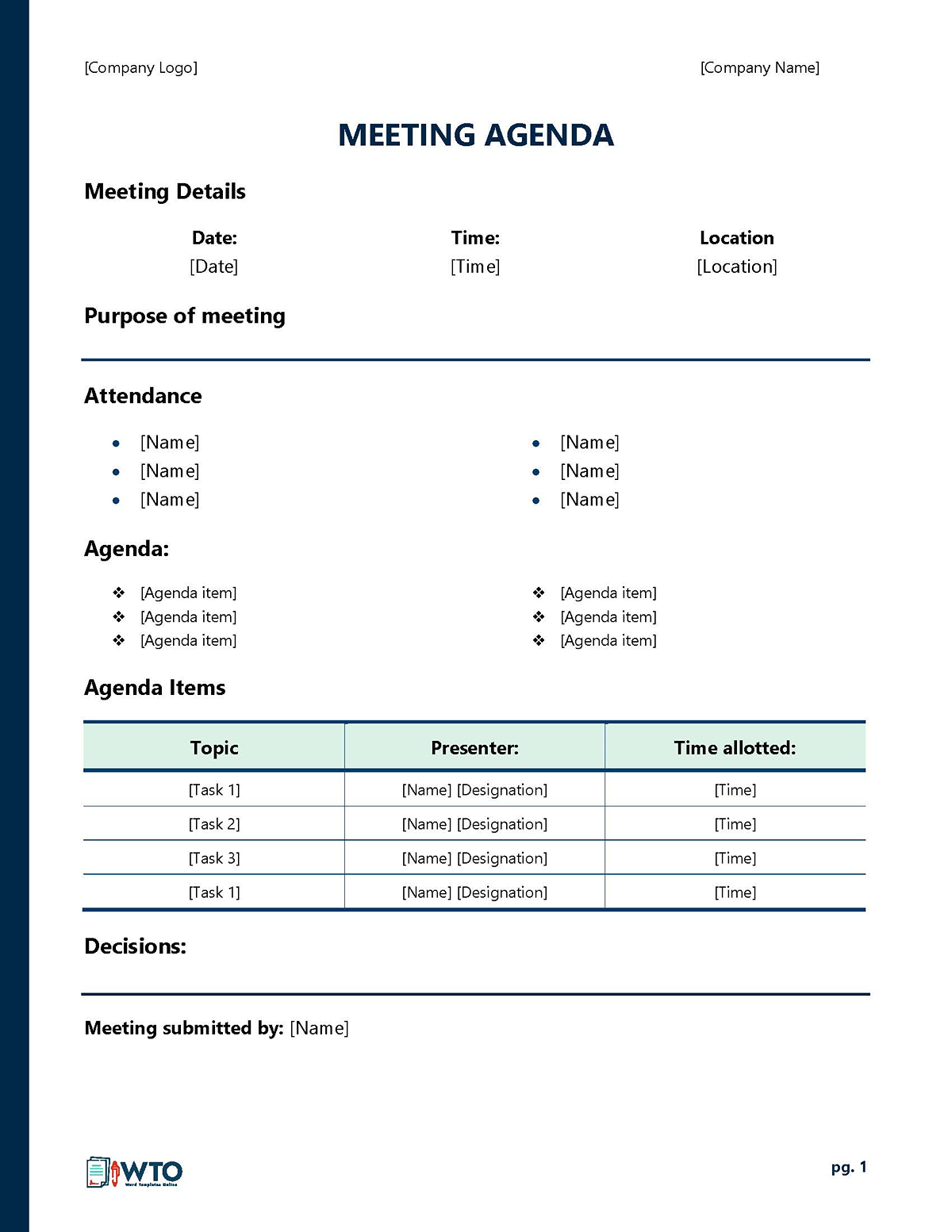
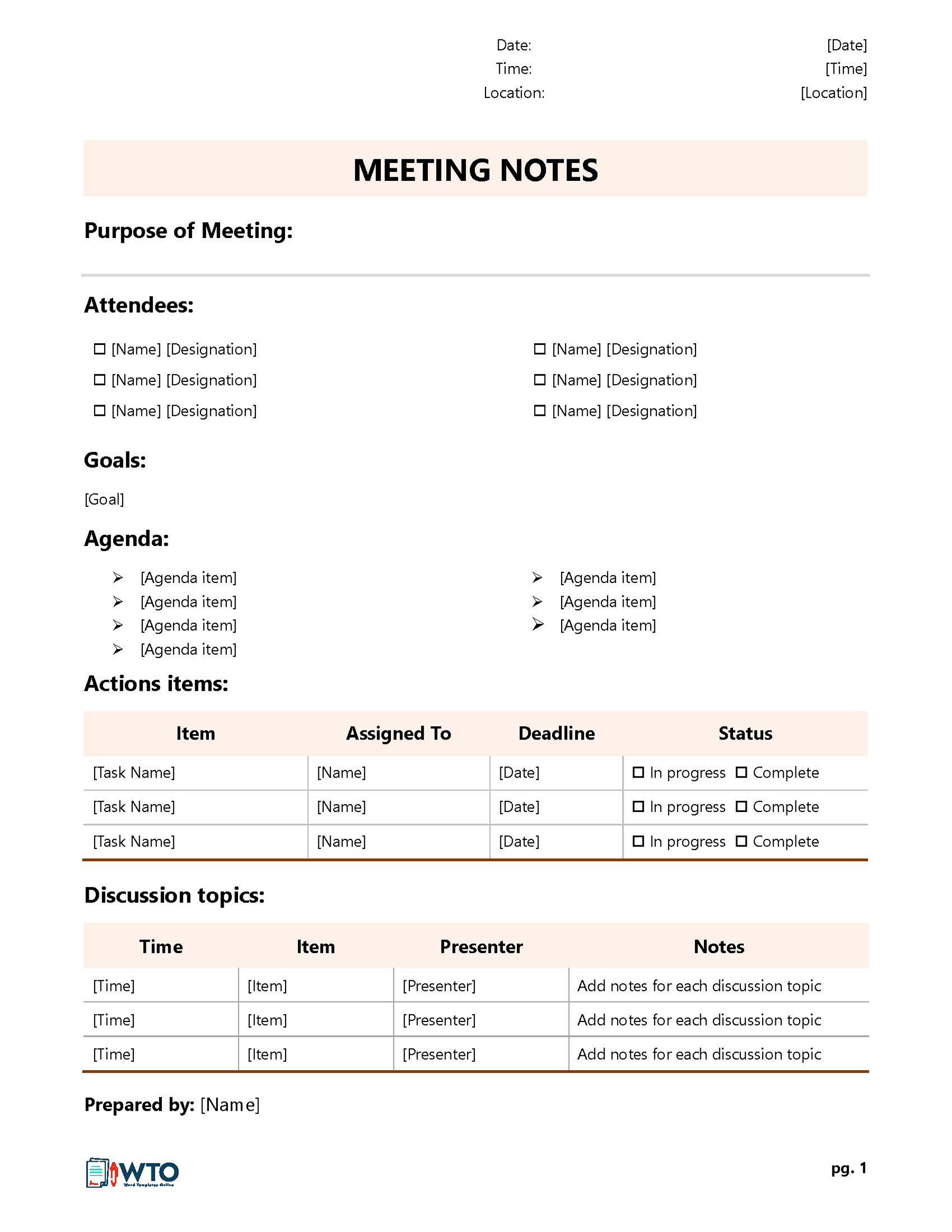
Meeting Types and Their Templates
Professionals, such as administrative assistants, project managers, team leaders, and business owners, can hold different types of meetings, as discussed below. With each session, templates with specific formats are required for proper note-taking:
Board meetings
These meetings are mainly held as part of corporate governance. The main discussion topics are organizational matters, including policies, budgets, and strategies. That means that the template required should include sections for documenting attendance, reviewing discussions and action items from previous meeting minutes, and recording decisions. Templates used for these meetings are meant to standardize the format and structure of the notes. This makes it easier to record and review the discussion, decisions, and action items.
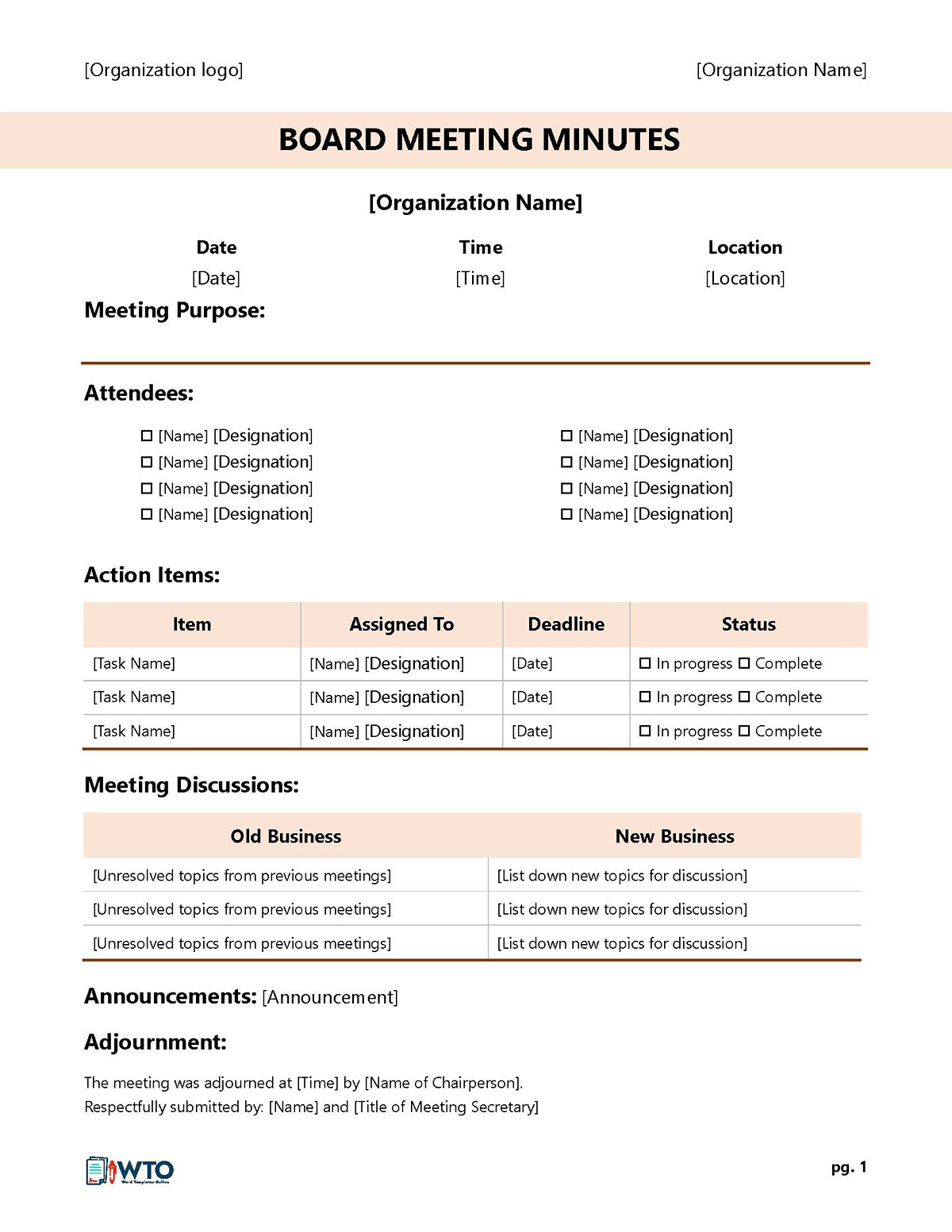
Business meetings
They are conducted to discuss different aspects of a business, such as finances, marketing, and sales. These may involve various attendees from different departments and locations. The template should have sections for action items, decisions, and follow-up tasks for these meetings. This guarantees proper note-taking concerning the management of the business and its clients. This means that attendees will receive the same information and work harmoniously regarding what is necessary.
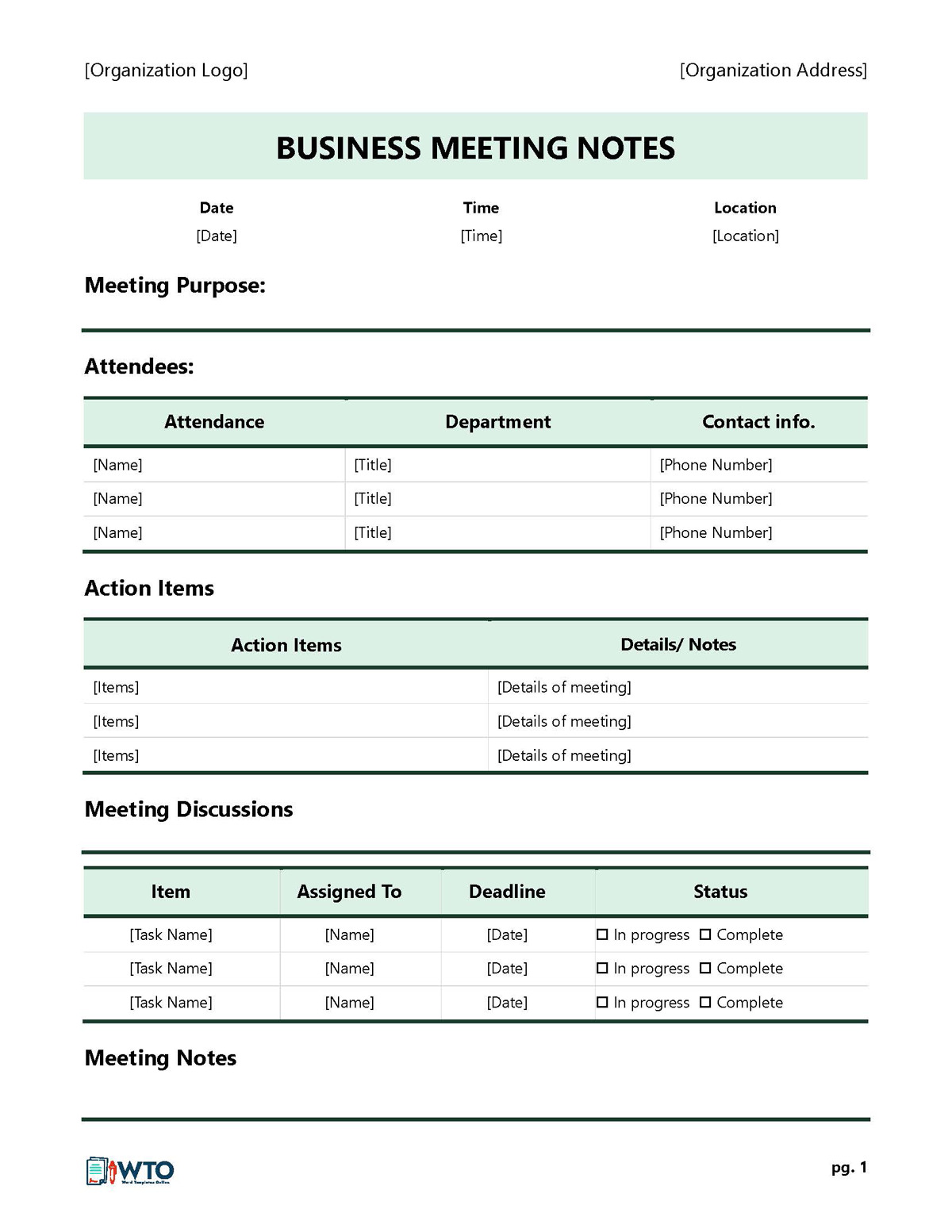
Management meetings
These meetings are mainly held among managers and executives who wish to discuss the performance of their business and employees, along with future plans. The template should have sections for recording performance metrics, documenting future business plans, highlighting the goals and objectives, and listing action items and follow-up tasks
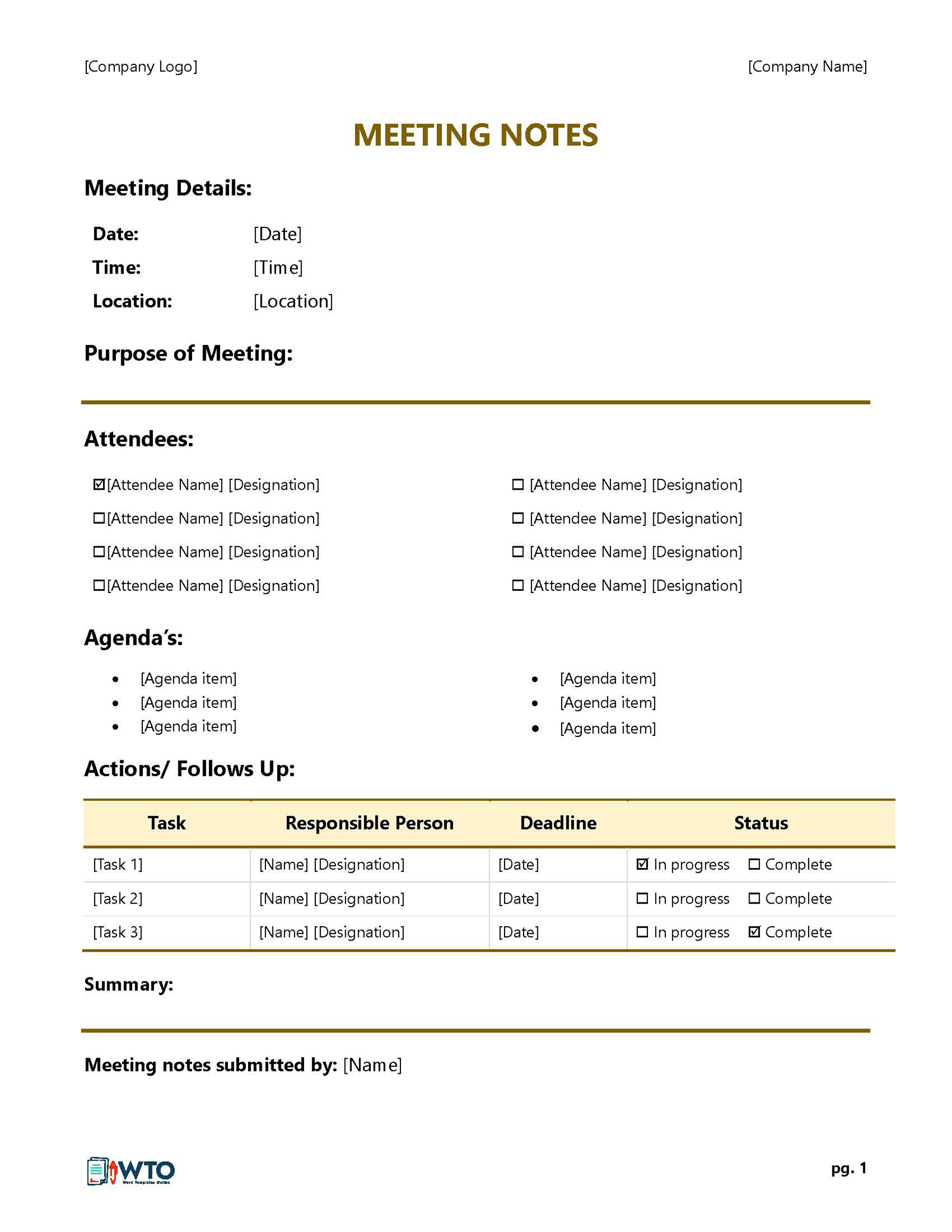
Disciplinary meetings
Disciplinary meetings are meant to discuss and address employee behavior and performance issues. Since these are sensitive and require detailed records, the most suitable notes template should have sections for the employee’s performance history, the subject under discussion, and the disciplinary action taken.
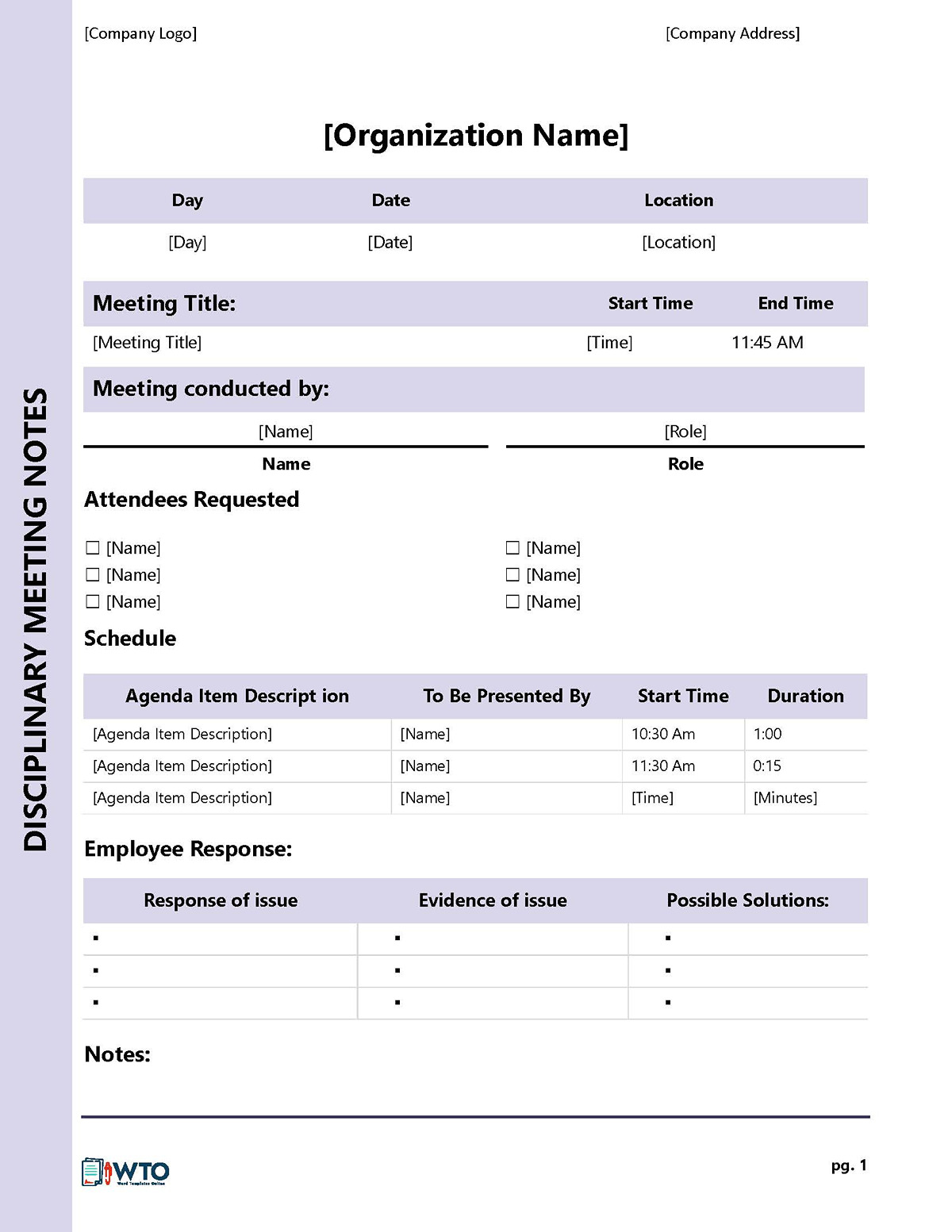
Client meetings
These are held to discuss business opportunities, project updates, and other issues regarding the client’s needs. They are meant to maintain a healthy client relationship. Therefore, the template required should have sections for action items, decisions made, follow-up tasks, and even client questions. The idea is to record and share clients’ needs, information, and preferences with the relevant stakeholders.
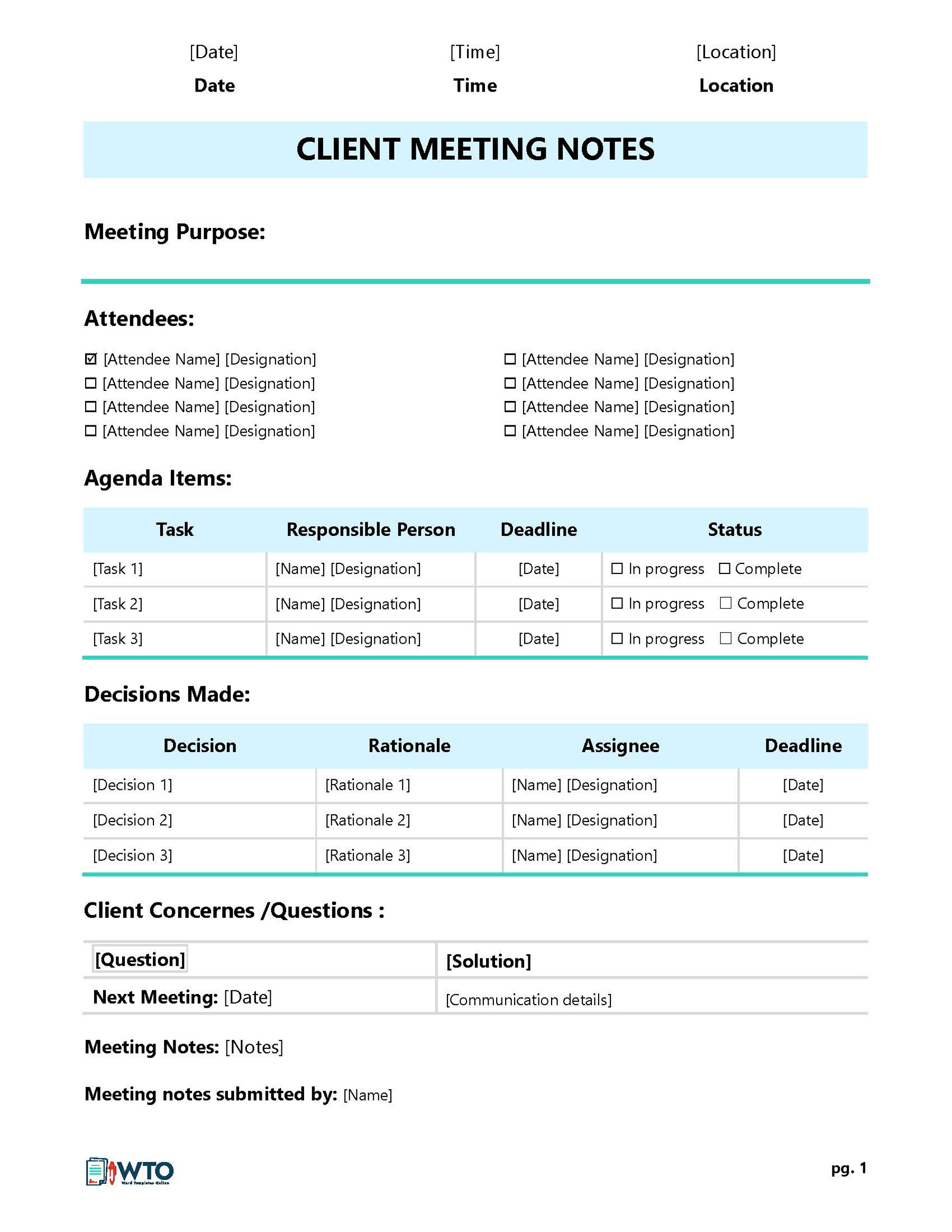
Committee meetings
For committee meetings, the discussions usually entail policy development, fundraising, community engagement, and other issues regarding the organization. The template should include sections meant for meeting objectives, discussion points, action items, deadlines, and follow-up tasks. The template ensures that all committee members are aware of the meeting’s agenda. In addition, you can accurately record all the discussion points and decisions during a session. Also, the committee can keep track of its progress over time.
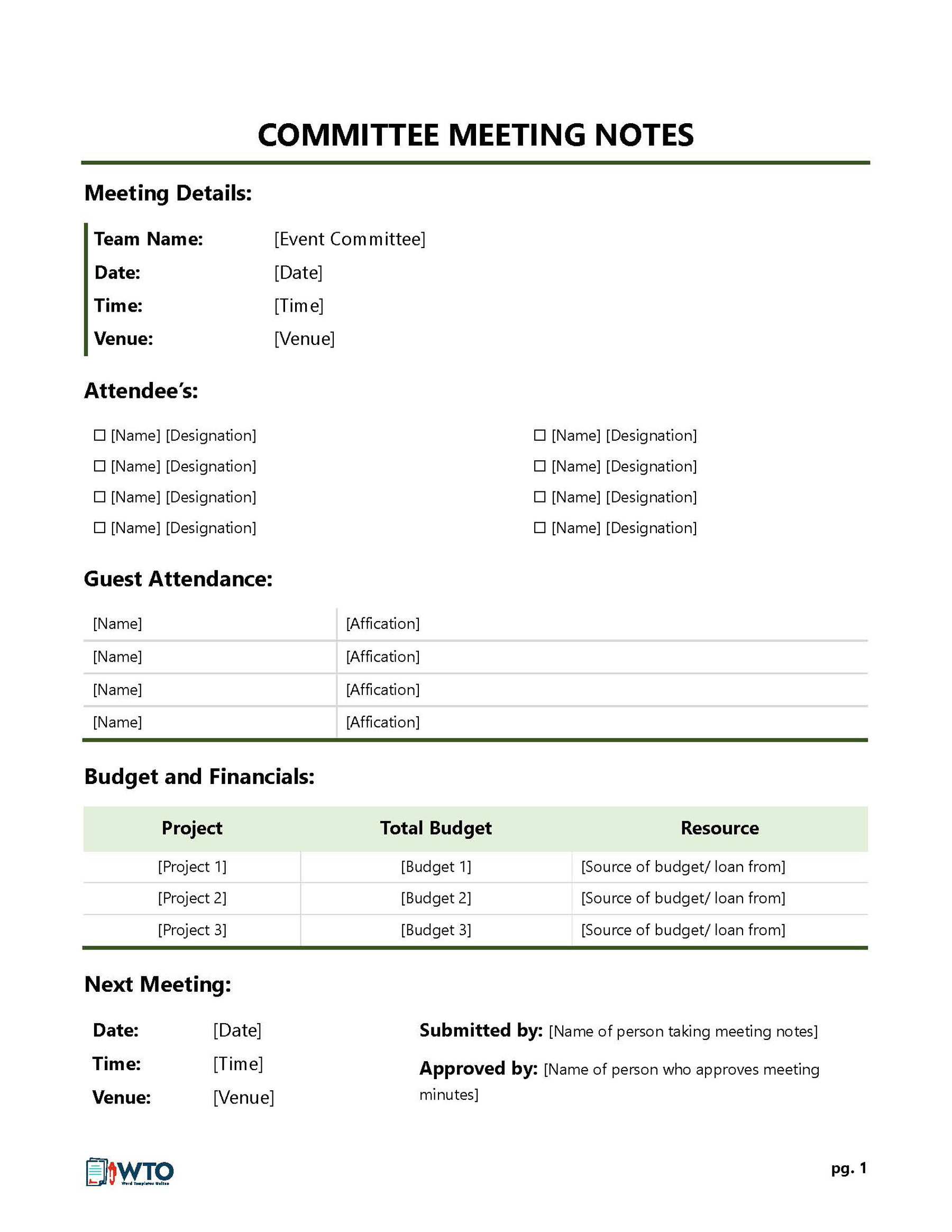
Best Practices for Customizing the Template
Whether you are creating a template from scratch or downloading the free printable ones, you should customize it to suit the needs of your meetings.
Below are some of the best practices you should observe for customizing such templates.
Keep it simple
Make your template simple and easy to use. You can add only relevant sections according to your meeting’s needs. This guarantees easier recording and proper organization of information. Keep in mind that a cluttered template will make it difficult for you to record important details.
Use consistent formatting
Maintaining consistent formatting throughout the template is advisable, as this will make the information easy to read and understand. You can achieve this by using the same font style and size across all sections. In addition, you can include headings and subheadings to distinguish the areas.
Customize it
You should tailor your template to suit your needs. You can do this by including sections suitable for recording specific information. For instance, a business meeting notes template should consist of a section for action items and follow-up tasks. If you are having a brainstorming session, you may want to include a section for capturing ideas.
Ensure accessibility
Make your template accessible to all participants, including those with disabilities. You can achieve this by using a font size and style that is easy to read. In addition, you can make your document compatible with assistive technologies. Finally, provide alternative formats for individuals who use screen readers.
Get feedback
Ensure that after you customize your template, you proceed to collect feedback from the team members or participants who will use it. This way, you can make the necessary changes or modifications to the document.
Meeting Notes vs. Minutes
You can prepare two types of documents during meetings: notes and minutes. Although they are both created to record the discussions during a session, they differ.
| Meeting Notes | Meeting Minutes |
| They are less formal and are meant to capture the discussions and action items of a meeting. | They are formal records of a meeting’s proceedings. |
| Any attendee can write it. | A selected individual, such as a secretary or clerk, usually prepares them. |
| They focus on key points, decisions, and next steps. | They focus on each agenda item, action, decision, and motion that was made. |
| They are usually shared with the participants to ensure that everyone is on board. | They discuss who said what and how individuals voted regarding different issues. They are then reviewed at the beginning of the next meeting. |
| They are less detailed and can be written in bullet point format or as a narrative summary. | They provide comprehensive and accurate details of everything discussed and decided during the meeting. |
| They track the progress of the decisions made during the meeting. | They are meant for record keeping since they accurately reflect what was discussed. |
Conclusion
A template for meeting notes is a useful tool when it comes to productivity and success in a meeting. A standardized format will allow you and the participants to remain focused, record the actions and decisions made, determine work deadlines, and identify follow-up tasks. It is important to include all the essential components when creating this template. You can also download free printable ones and customize them to suit your requirements. Effective communication and documentation are essential for professional meetings. Therefore, having this template will provide you with the structure you need when note-taking.










